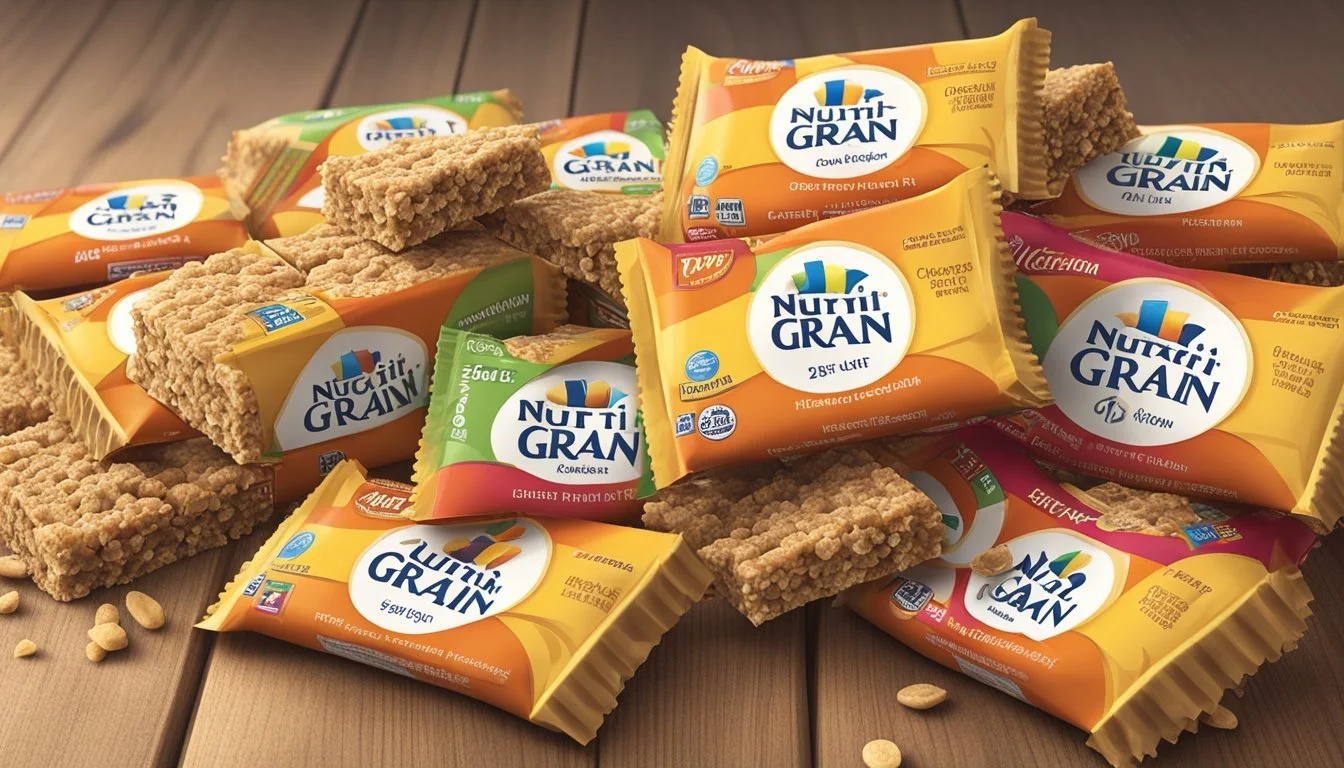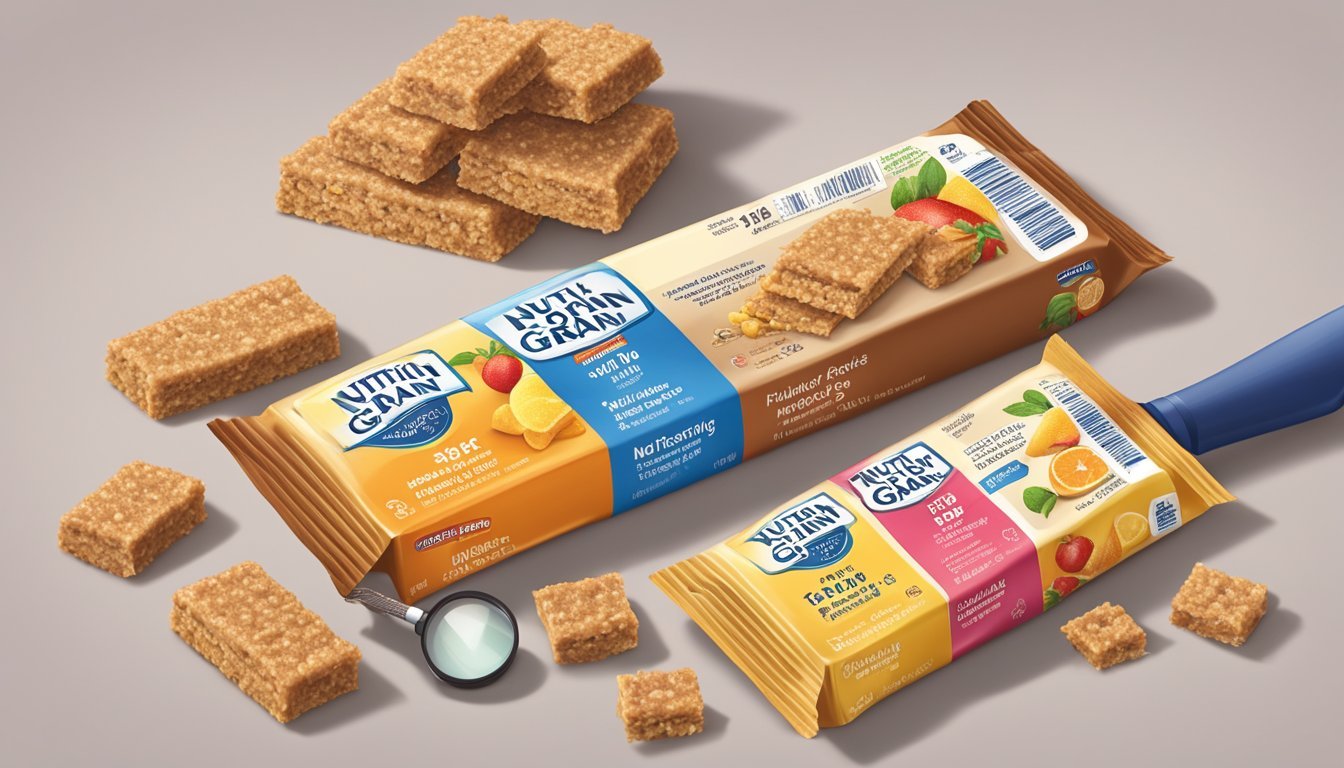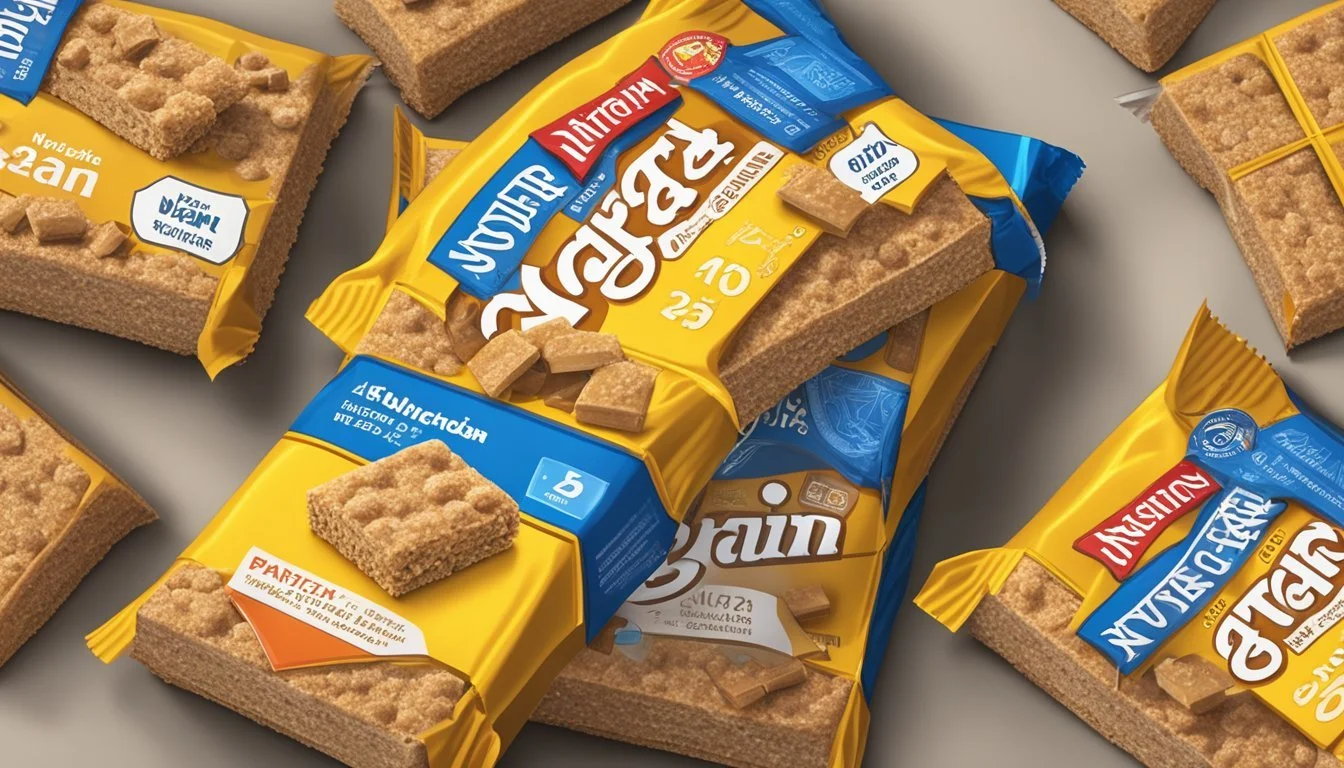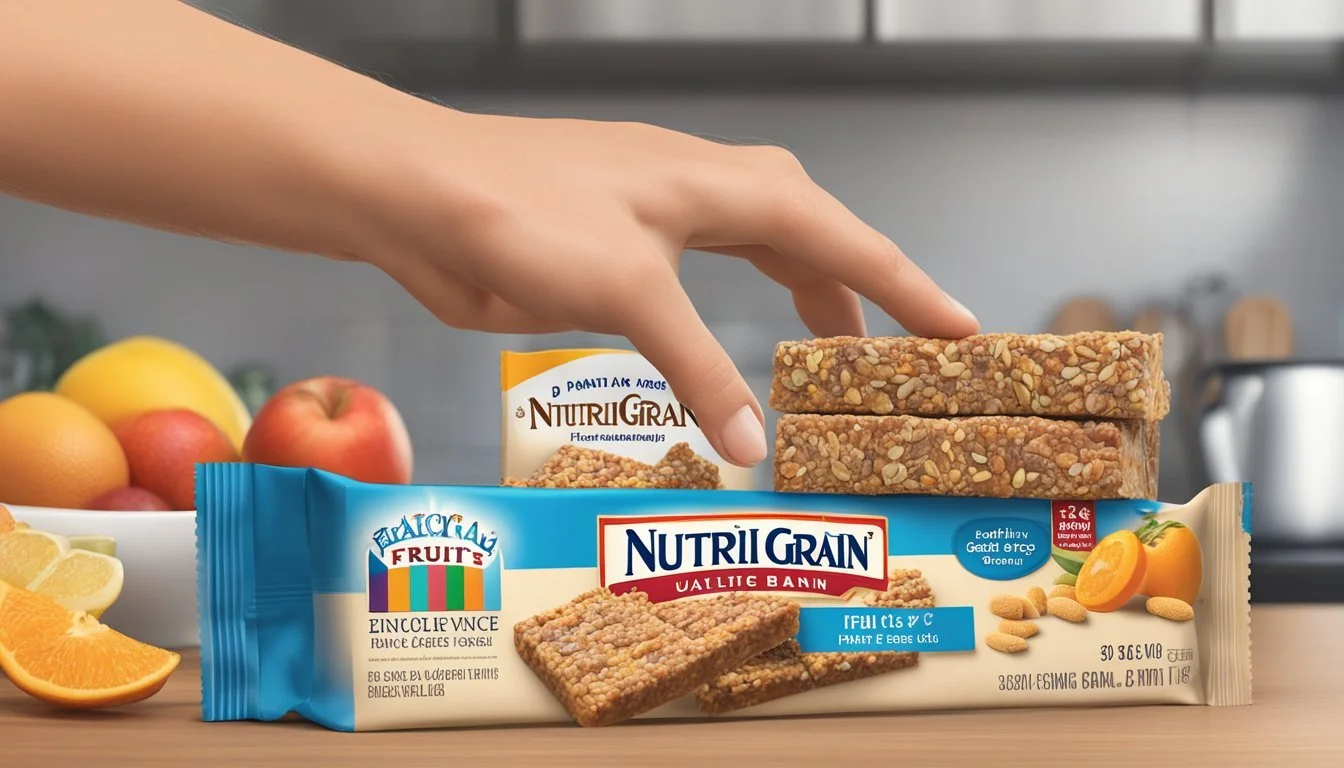How Many Nutri-Grain Fruit and Grain Bars Per Day Exceed a Healthy Limit?
Nutri-Grain bars, marketed as fruit and grain cereal bars, are commonly consumed as quick snacks that offer a blend of convenience and the promise of nutritional benefits. Each Nutri-Grain Apple Cinnamon bar, for instance, contains 130 calories, providing a moderate amount of energy suited for a light snack or part of a breakfast. It's crucial to consider the nutritional content in terms of energy provided versus the nutritional value when assessing their role in a daily diet.
On one hand, Nutri-Grain bars contain whole grain oats and fruit, suggesting that they might be a healthy snack option. However, a closer look at the nutrition facts reveals that they may be higher in sugar and lower in fiber and protein compared to other snack bars. Despite their whole grain and fruit content, these bars typically contain added sugar—around 12 grams per serving—and provide relatively low levels of fiber and protein, both of which are important for satiety and overall nutritional balance.
Therefore, while Nutri-Grain bars might offer a quick source of energy, relying on them excessively can lead to an intake of added sugars that surpasses recommended daily limits. They should, consequently, be consumed in moderation, factoring in individual dietary needs and the potential cumulative impact of consuming multiple bars throughout the day.
Nutritional Profile of Nutri-Grain Bars
Nutri-Grain bars are convenient snacks that offer a blend of nutrients and energy. Their nutritional content varies slightly among flavors, but they typically contain vitamins and minerals, alongside added sugars and processed ingredients.
Caloric and Nutrient Content
Nutri-Grain cereal bars are designed to provide a quick source of energy. A standard serving size, which is typically one bar, contains:
Calories: Around 130 kcal
Total Fat: Approximately 3.5g
Saturated Fat: Around 0.5g
Trans Fat: 0g
Cholesterol: 0mg
Sodium: 115-135mg, varying by flavor
Protein: Varied amounts, not typically the main focus of these bars
Dietary Fiber: Minimal; exact amounts are specific to the type of bar
Vitamins and Minerals: They often include various vitamins and minerals, such as vitamin A and iron.
Sugar and Added Sugars
Sugar content is one of the notable aspects of Nutri-Grain bars. The bars contain:
Total Carbohydrates: Around 24g per bar
Sugar: Typically around 12g per bar
Sources of added sugars may include corn syrup, high fructose corn syrup, and others depending on the specific product.
Whole Grains and Processed Ingredients
Nutri-Grain bars are marketed as containing whole grains, which is an important component of a healthy diet. The grains often found in these bars are:
Whole Grain Oats
Wheat
However, along with whole grains, the bars also list processed ingredients, which might include:
Modified food starch
Various gums used as thickeners
Vegetable juices for coloring
The presence of whole grains can contribute some nutritional value in the form of fiber. However, it is important to consider the balance of whole grains against the processed ingredients within each bar.
Health Considerations
While Nutri-Grain bars can be a convenient snack option, it's important to consider their nutritional profile and potential health effects when determining how many to consume in a day.
Impact on Diet and Weight
Nutri-Grain bars contain approximately 130 calories and 3.5g of total fat per bar, making them a relatively low-calorie snack option. However, with 24g of carbohydrates and sugar content that can reach up to 13-14g per bar, they provide a surge of energy that is short-lived due to their low fiber content of just 1g. This lack of fiber can lead to less satiation, potentially contributing to increased intake and weight gain for individuals not monitoring their overall consumption.
Risks of Overconsumption
Overconsuming Nutri-Grain bars can contribute to an excess intake of added sugar, which has been linked to an array of health issues such as weight gain, diabetes, and heart disease. The American Heart Association recommends that men limit their added sugar intake to 36g per day and women to 25g. Just two Nutri-Grain bars can approach or exceed this daily limit. Additionally, the sodium content (115mg per bar), when multiplied by several servings, can accumulate to a significant portion of the recommended daily limit of 2,300mg, potentially impacting heart health.
Allergens and Dietary Restrictions
Individuals with dietary restrictions should note that Nutri-Grain bars contain ingredients derived from gluten, soy, and may contain traces of nuts, which can trigger allergic reactions. Those with celiac disease or gluten sensitivity should avoid Nutri-Grain bars due to the presence of whole wheat flour and oat blend. For those with allergies to soy or nuts, it is important to read the packaging carefully to avoid any adverse effects such as abdominal pain or more severe reactions.
Consumption Recommendations
Careful consideration is necessary when incorporating Nutri-Grain bars into a daily diet, as they contain sugar and calories which can impact overall nutritional balance and health.
Daily Intake Limits
A Nutri-Grain fruit and grain bar typically contains around 120 calories, with 11 grams of sugar and less than 1 gram of fiber per serving. While they offer a convenient snack option, the American Heart Association (AHA) recommends limiting added sugars to no more than 25 grams for women and 36 grams for men daily. Given this guideline, consuming more than two Nutri-Grain bars may exceed these sugar intake recommendations.
Balancing with Other Foods
It is important for individuals to balance the consumption of Nutri-Grain bars with other foods that are high in nutritional content. Dietitians often recommend including a variety of fruits, vegetables, and proteins to achieve a balanced diet. Alternatives like fresh fruit or a handful of nuts offer more fiber and less sugar, promoting fullness and providing more nutritional value.
Guidance from Health Organizations
Health organizations such as the AHA emphasize the importance of maintaining a balanced diet to prevent heart disease and diabetes. They suggest that snack foods should not exceed the daily value of calorie and sugar intake, and should complement the intake of essential nutrients. Choosing healthy alternatives over processed snack bars can help in preventing weight gain and managing blood sugar levels.
Alternatives to Nutri-Grain Bars
For those seeking a healthier lifestyle or simply variety in their snack selection, considering alternatives to Nutri-Grain bars can offer nutritional benefits and new flavors. This section suggests various options ranging from other bar brands to homemade recipes, ensuring convenience without compromising on health.
Healthier Snack Options
Fresh Fruit & Nuts: Pairing an apple with a small bag of nuts offers a balance of natural sugars and proteins.
Greek Yogurt: A serving of Greek yogurt can provide probiotics and is a source of protein; add fruits for flavor.
Cheese Sticks: Cheese sticks are a convenient source of calcium and pair well with fruits like apples.
Comparing Other Bar Brands
Made Good Mornings Bars: Offering a dose of vitamins A, D, E, and Thiamin, these bars are a healthier choice with less protein.
Clif Bars: Known for their organic oats and soybeans, Clif Bars are designed for those with an active lifestyle and contain an average of 200 calories.
Aldi's Millville Bars: They are comparable to Nutri-Grain bars in taste and texture, often at a lower price point. Aldi provides an affordable alternative without sacrificing taste.
DIY Snack Bar Recipes
Combine oats, nuts, honey, and nut butter.
Press the mixture into a pan, bake, and then slice into bars.
Zucchini Breakfast Muffins:
Incorporate whole grains, shredded zucchini, and natural flavors into a muffin mix.
Bake and freeze for convenient, on-the-go breakfast options.
Understanding Ingredient Labels
When considering the consumption of Nutri-Grain bars, it is imperative to scrutinize the ingredient labels carefully. This helps to assess the nutritional value and to understand the quantity and quality of ingredients such as added sugars, whole grains, and processed components.
Identifying Processed Components
Processed ingredients and additives are often found in snack bars like Nutri-Grain. One should look for names like high fructose corn syrup, carrageenan, and guar gum. These are not inherently harmful, but their presence can indicate a product is highly processed. Additionally, ingredients are listed in descending order by weight, so the higher up on the list these appear, the more processed the item is likely to be.
Spotting Hidden Sugars
Hidden sugars in Nutri-Grain bars can come in several forms, such as corn syrup, invert sugar, and puree concentrate. "Natural flavor" can also sometimes mask the presence of added sugars. Checking for anything ending in '-ose' can be a useful strategy, since this suffix is commonly found in sugar names. Understanding the different names for sugar helps in accurately assessing the sugar content.
Healthy Ingredient Indicators
Nutri-Grain bars promote their use of whole grains, which should be prominent in the ingredient list and contribute significantly to the fiber content on the nutrition label. Healthy Nutri-Grain bars will list whole grains as one of the first few ingredients and should feature a higher fiber and protein content, both of which contribute to overall nutrition and the feeling of fullness.
By paying close attention to these details on ingredient labels, consumers can make more informed decisions about their daily consumption of Nutri-Grain bars and other similar products.
Long-Term Effects on Health
Consuming Nutri-Grain bars in moderation is key, as their high sugar content and presence of processed ingredients may have adverse health effects when eaten excessively. Understanding these effects helps to make informed decisions regarding their consumption.
Sugar's Impact on Health
Nutri-Grain bars often contain 12g of added sugar per bar, which, when consumed excessively, can lead to health issues such as diabetes and heart disease. Consistent high sugar intake may increase the risk of chronic illnesses and can lead to energy spikes followed by crashes, impacting overall metabolic health.
Processed Foods and Inflammation
Processed ingredients, such as those found in many Nutri-Grain bars, can contribute to systemic inflammation, which has been linked to a higher risk of various diseases, including cancer. The additives and preservatives found in these bars, intended to prolong shelf life and enhance flavor, may also have implications on long-term health.
Nutrients and Disease Prevention
While Nutri-Grain bars provide some vitamins and minerals like calcium and iron, the overall nutrient profile is less favorable compared to whole grains and unprocessed alternatives. The bars typically have low levels of fiber, an essential nutrient for digestive health and disease prevention. Adequate intake of fiber, along with essential vitamins and minerals, is vital for maintaining health and reducing disease risk.
Practical Tips for Snacking
When integrating snacks such as Nutri-Grain bars into one's diet, it is crucial to consider their nutritional facts and how to balance them with other dietary needs. This section provides straightforward advice on effectively incorporating snack bars without compromising overall nutritional balance.
Incorporating Nutri-Grain Bars into Your Diet
Nutri-Grain bars offer a quick and convenient option for snacking, particularly when time is short. They are commonly considered for breakfast or as a pre-workout energy boost due to their carbohydrate content. When one opts for a Nutri-Grain bar, pairing it with a source of protein, like yogurt or nuts, can help balance the meal, providing sustained energy and satiety between meals.
Maintaining a Balanced Diet
Snack bars should complement a diet that is rich in fruits, vegetables, lean proteins, and whole grains, not replace them.
Diversify intake: Balance Nutri-Grain bar consumption with other healthy snack options.
Watch for sugars: Take into account the sugar content in Nutri-Grain bars and adjust other sources of sugar accordingly throughout the day.
Hydrate: Always accompany snacks with proper hydration, water being the best choice.
Nutrition Facts and Portion Control
Moderation is key in maintaining a healthy diet. Overconsumption of convenient snack bars can inadvertently lead to an excess intake of calories and sugar, as well as insufficient nutrient diversity.
Calories: Each Nutri-Grain bar contains approximately 130 calories – factoring this into daily caloric needs is essential.
Sugar and Fiber: While Nutri-Grain bars do offer fiber, they also contain sugar. The exact sugar content can vary, so checking the label is paramount.
Sodium: With around 115mg of sodium per bar, those monitoring their sodium intake should consider this in their daily limits.
Understanding nutrition facts and controlling portion size will help one enjoy Nutri-Grain bars as part of a balanced diet without overindulgence.








